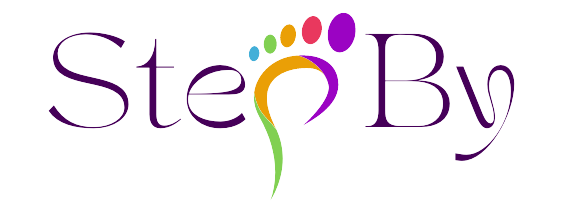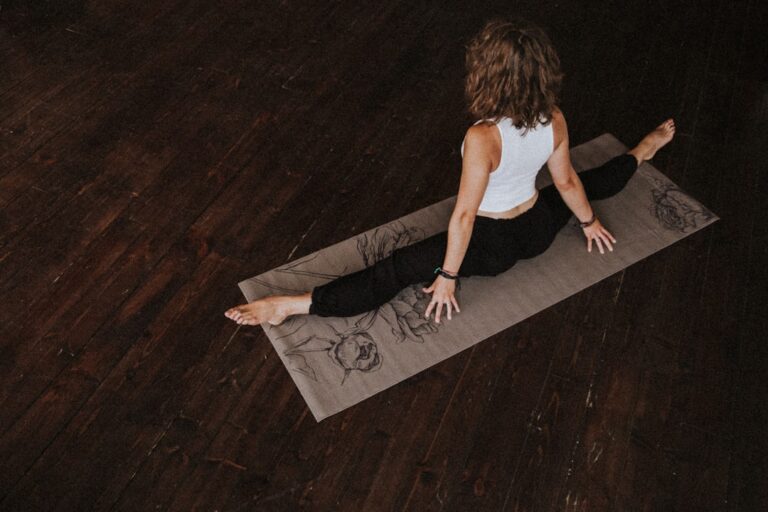Pilates has emerged as a popular form of exercise that emphasizes core strength, flexibility, and overall body awareness. Originating from the work of Joseph Pilates in the early 20th century, this method has evolved into a comprehensive fitness system that appeals to individuals of all ages and fitness levels. The core routine in Pilates focuses on engaging the muscles of the abdomen, lower back, hips, and pelvis, which are essential for maintaining stability and balance in everyday activities.
By integrating controlled movements with mindful breathing, practitioners can enhance their physical capabilities while also fostering a deeper connection between mind and body. The significance of a strong core cannot be overstated. It serves as the foundation for nearly all physical activities, from simple tasks like sitting and standing to more complex movements involved in sports and exercise.
A well-designed Pilates core routine not only strengthens these muscles but also promotes better posture, reduces the risk of injury, and improves overall functional movement. As individuals embark on their Pilates journey, they often discover that the benefits extend beyond physical fitness, positively impacting mental well-being and self-awareness.
Key Takeaways
- Pilates core routine focuses on strengthening the core muscles to improve posture and overall body alignment.
- Improving posture through Pilates can lead to reduced back pain, increased flexibility, and better balance.
- The core muscles targeted in Pilates include the deep abdominal muscles, pelvic floor, and muscles around the spine.
- Before starting the Pilates core routine, it’s important to do warm-up exercises to prepare the body for the workout.
- Proper form, alignment, and breathing techniques are crucial for an effective Pilates core routine and to prevent injury.
Benefits of Improving Posture through Pilates
One of the most notable advantages of practicing Pilates is its profound impact on posture. Poor posture is a common issue in today’s society, often exacerbated by prolonged sitting and the use of technology. By focusing on core strength and alignment, Pilates helps individuals develop a more upright and balanced posture.
This improvement can lead to a reduction in discomfort and pain associated with slouched or misaligned positions, particularly in the neck, shoulders, and lower back. Moreover, enhanced posture contributes to increased confidence and self-esteem. When individuals stand tall and aligned, they often feel more empowered and self-assured.
This newfound confidence can translate into various aspects of life, from personal interactions to professional settings. Additionally, good posture facilitates better breathing and circulation, allowing for improved oxygen flow throughout the body. As practitioners engage in their Pilates core routine, they not only strengthen their physical form but also cultivate a sense of poise and grace that can be carried into daily life.
Understanding the Core Muscles

To fully appreciate the benefits of a Pilates core routine, it is essential to understand the core muscles themselves. The core is not merely the abdominal muscles; it encompasses a complex network of muscles that work together to stabilize the spine and pelvis. Key players in this group include the rectus abdominis, transverse abdominis, obliques, erector spinae, diaphragm, and pelvic floor muscles.
Each of these muscles plays a vital role in maintaining balance and stability during movement. The transverse abdominis, often referred to as the body’s natural corset, is particularly important for providing support to the spine. It acts like a stabilizing belt around the torso, helping to protect the lower back during various activities.
The obliques assist in rotational movements and lateral flexion, while the erector spinae helps maintain an upright posture. Understanding these muscle groups allows practitioners to engage them effectively during their Pilates core routine, leading to improved strength and functionality.
Warm-Up Exercises for Pilates Core Routine
| Exercise | Description | Repetitions | Duration |
|---|---|---|---|
| Marching | Lie on your back, lift one knee towards your chest while keeping the other leg straight. Alternate legs in a marching motion. | 10-15 | 1 minute |
| Pelvic Tilts | Lie on your back with knees bent, tilt your pelvis up and down to engage your core muscles. | 10-12 | 1 minute |
| Arm Circles | Stand with feet hip-width apart, extend arms to the sides and make small circles with your arms. | 10-15 | 1 minute |
| Spine Stretch | Sit tall with legs extended, reach arms forward and round your spine, then stack your spine back up to sitting tall. | 8-10 | 1 minute |
Before diving into a Pilates core routine, it is crucial to prepare the body with warm-up exercises. Warming up increases blood flow to the muscles, enhances flexibility, and reduces the risk of injury. A well-structured warm-up should focus on mobilizing the joints and activating the core muscles.
Simple movements such as cat-cow stretches can help loosen the spine while engaging the abdominal muscles. Another effective warm-up exercise is the pelvic tilt. This movement encourages awareness of the pelvic region while gently activating the core.
By lying on their backs with knees bent and feet flat on the floor, practitioners can engage their abdominal muscles by tilting their pelvis upward and flattening their lower back against the mat. This not only prepares the core for more intense work but also reinforces proper alignment throughout the routine.
15-Minute Pilates Core Routine: Step-by-Step Guide
A concise yet effective 15-minute Pilates core routine can be an excellent way for individuals to strengthen their core muscles without requiring a significant time commitment. The routine typically begins with foundational exercises that emphasize engagement and control. Starting with exercises like “The Hundred,” practitioners lie on their backs with legs raised at a 45-degree angle while pumping their arms up and down rhythmically.
This exercise activates the core while promoting breath control. Following “The Hundred,” practitioners can transition into “Roll-Ups,” which involve slowly rolling up from a supine position to a seated position while engaging the abdominal muscles throughout the movement. This exercise not only strengthens the core but also enhances spinal flexibility.
Other key exercises may include “Single Leg Circles,” “Plank,” and “Side Plank,” each targeting different aspects of core strength and stability. By incorporating these movements into a 15-minute routine, individuals can effectively engage their core while also enjoying the benefits of Pilates.
Tips for Proper Form and Alignment

Maintaining proper form and alignment during Pilates exercises is essential for maximizing benefits and minimizing injury risk. Practitioners should focus on engaging their core muscles throughout each movement, ensuring that they maintain a neutral spine position. This means avoiding excessive arching or rounding of the back while performing exercises.
Additionally, attention should be paid to shoulder positioning. Keeping shoulders relaxed and away from the ears helps prevent tension in the neck and upper back. Practitioners should also be mindful of their breath; inhaling during preparation phases and exhaling during exertion phases can enhance performance and support muscle engagement.
By prioritizing proper form and alignment, individuals can cultivate a safe and effective Pilates practice that yields long-lasting results.
Modifications for Different Fitness Levels
One of the remarkable aspects of Pilates is its adaptability to various fitness levels. Beginners may find certain exercises challenging; therefore, modifications are essential for ensuring inclusivity in practice. For instance, those new to Pilates can perform “The Hundred” with their feet on the ground instead of raised in the air, allowing them to focus on engaging their core without straining their lower back.
As practitioners progress in their abilities, they can gradually increase the intensity of their workouts by incorporating more advanced variations or increasing repetitions. For example, those who have mastered “Plank” may choose to add leg lifts or arm reaches to challenge their stability further. By offering modifications tailored to individual needs, Pilates fosters an environment where everyone can experience growth and improvement at their own pace.
Breathing Techniques for Pilates Core Routine
Breathing plays a pivotal role in Pilates practice, serving as both a tool for enhancing performance and a means of promoting relaxation. The fundamental breathing technique in Pilates involves inhaling through the nose and exhaling through pursed lips or an open mouth. This controlled breathing pattern helps practitioners engage their core muscles more effectively while maintaining focus throughout each movement.
Incorporating breath into each exercise allows individuals to connect with their bodies on a deeper level. For instance, during “Roll-Ups,” practitioners can inhale as they prepare to roll up and exhale as they engage their core to lift themselves off the mat. This synchronization of breath with movement not only enhances physical performance but also cultivates mindfulness—a key component of Pilates practice.
Incorporating Pilates into Daily Routine
Integrating Pilates into daily life can yield significant benefits for overall health and well-being. Individuals can start by dedicating just a few minutes each day to practice essential core exercises or stretches that promote flexibility and strength. Even short sessions can have a cumulative effect over time, leading to improved posture and reduced tension in the body.
Moreover, incorporating mindful movement into daily activities can enhance awareness of body mechanics. Simple adjustments such as practicing proper lifting techniques or maintaining an upright posture while sitting can reinforce principles learned during Pilates sessions. By making these small changes consistently, individuals can create a lifestyle that prioritizes movement quality and overall health.
Additional Exercises to Complement Pilates Core Routine
While Pilates offers an excellent foundation for core strength, complementing it with additional exercises can further enhance overall fitness levels. Activities such as yoga or resistance training can provide variety while targeting different muscle groups. For instance, yoga poses like “Downward Dog” or “Warrior II” promote flexibility while engaging core stability.
Resistance training exercises such as squats or lunges can also be beneficial when integrated into a fitness regimen alongside Pilates practice. These movements challenge different aspects of strength while reinforcing proper alignment and posture—key principles shared by both disciplines. By diversifying their workout routines with complementary exercises, individuals can achieve balanced fitness that supports long-term health goals.
Maintaining Good Posture for Long-Term Health
In conclusion, embracing a Pilates core routine offers numerous benefits that extend beyond mere physical fitness; it fosters improved posture, enhanced body awareness, and overall well-being. As individuals engage with this practice regularly, they cultivate not only strength but also mindfulness—a vital component for maintaining good posture throughout life. The journey toward better posture is ongoing; it requires commitment and consistency in practice.
By incorporating warm-ups, focusing on proper form, utilizing breathing techniques, and adapting exercises to fit individual needs, practitioners can create a sustainable approach to health that prioritizes both physical strength and mental clarity. Ultimately, maintaining good posture through Pilates serves as a foundation for long-term health—empowering individuals to move through life with confidence and grace.
FAQs
What is Pilates?
Pilates is a form of exercise that focuses on strengthening the body’s core muscles, including the abdomen, back, and hips. It also emphasizes proper alignment, breathing, and smooth, flowing movements.
What are the benefits of a Pilates core routine?
A Pilates core routine can help improve posture, increase core strength, enhance flexibility, and promote overall body awareness. It can also help reduce the risk of injury and alleviate back pain.
How long does a Pilates core routine take?
A typical Pilates core routine can range from 15 to 30 minutes, depending on the specific exercises and repetitions included. It is designed to be efficient and effective, targeting the core muscles in a relatively short amount of time.
Can anyone do a Pilates core routine?
Pilates is a low-impact form of exercise that can be modified to suit individuals of all fitness levels and abilities. However, it is always recommended to consult with a healthcare professional before starting any new exercise routine, especially for those with existing health conditions or injuries.
Do I need any special equipment for a Pilates core routine?
While some Pilates exercises may incorporate equipment such as resistance bands, stability balls, or Pilates rings, a basic core routine can be done using just a mat. The focus is on bodyweight exercises and controlled movements to engage the core muscles.


